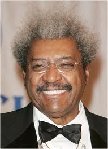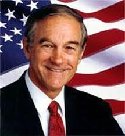Henry Ford (July 30, 1863 – April 7, 1947) was an American industrialist, business magnate, and founder of the Ford Motor Company, and chief developer of the assembly line technique of mass production. By creating the first automobile that middle-class Americans could afford, he converted the automobile from an expensive curiosity into an accessible conveyance that profoundly impacted the landscape of the 20th century.
His introduction of the Ford Model T automobile revolutionized transportation and American industry. As the Ford Motor Company owner, he became one of the richest and best-known people in the world. He is credited with "Fordism": mass production of inexpensive goods coupled with high wages for workers. Ford had a global vision, with consumerism as the key to peace. His intense commitment to systematically lowering costs resulted in many technical and business innovations, including a franchise system that put dealerships throughout North America and major cities on six continents. Ford left most of his vast wealth to the Ford Foundation and arranged for his family to permanently control it.
Henry Ford was born July 30, 1863, on a farm in Springwells Township, Michigan. His father, William Ford (1826–1905), was born in County Cork, Ireland, to a family that had emigrated from Somerset, England in the 16th century. His mother, Mary Ford (née Litogot; 1839–1876), was born in Michigan as the youngest child of Belgian immigrants; her parents died when she was a child and she was adopted by neighbors, the O'Herns. Henry Ford's siblings were Margaret Ford (1867–1938); Jane Ford (c. 1868–1945); William Ford (1871–1917) and Robert Ford (1873–1934).
His father gave him a pocket watch in his early teens. At 15, Ford dismantled and reassembled the timepieces of friends and neighbors dozens of times, gaining the reputation of a watch repairman.
In 1891, Ford became an engineer with the Edison Illuminating Company of Detroit. After his promotion to Chief Engineer in 1893, he had enough time and money to devote attention to his experiments on gasoline engines. These experiments culminated in 1896 with the completion of a self-propelled vehicle, which he named the Ford Quadricycle. He test-drove it on June 4. After various test drives, Ford brainstormed ways to improve the Quadricycle.
The Model T debuted on October 1, 1908.
It had the steering wheel on the left, which every other company soon copied. The entire engine and transmission were enclosed; the four cylinders were cast in a solid block; the suspension used two semi-elliptic springs. The car was very simple to drive, and easy and cheap to repair. It was so cheap at $825 in 1908 ($23,760 today), with the price falling every year, that by the 1920s, a majority of American drivers had learned to drive on the Model T, despite the fact that drivers who were only familiar with the Model T's unique foot-operated planetary transmission and steering-column operated throttle-cum-accelerator had to learn a completely different set of skills to drive any other gasoline-powered automobile of the time.
Ford was interested in engineered woods ("Better wood can be made than is grown") (at this time plywood and particle board were little more than experimental ideas); corn as a fuel source, via both corn oil and ethanol; and the potential uses of cotton. Ford was instrumental in developing charcoal briquets, under the brand name "Kingsford". His brother-in-law, E.G. Kingsford, used wood scraps from the Ford factory to make the briquets.
If you are interested in reading a lot more about Henry Ford, go here:
https://en.wikipedia.org/wiki/Henry_Ford
Looking for a budget friendly, fast, and delicious way to eat? Our Deep Dish Pizza Casserole is just what you need! This easy deep dish pizza is ready in just 30 minutes, and is sure to please the kids with its cheesy pizza goodness. You'll give the flavors and simplicity of this dish an A+!
- 1 pound ground beef
- 1 1/2 cups spaghetti sauce
- 1 teaspoon Italian seasoning
- 1 cup frozen bell peppers and onions, thawed and drained
- 1 (10-ounce) can refrigerated pizza dough
- 12 slices mozzarella cheese, divided
- 1/4 cup grated Parmesan cheese
- Preheat oven to 425º. Coat a 9- x 13-inch baking dish with cooking spray.
- In a medium nonstick skillet over medium-high heat, brown beef, stirring until meat crumbles and is no longer pink. Drain off pan drippings. Stir in spaghetti sauce, Italian seasoning, and onion and pepper mixture and cook until heated through.
- Meanwhile, unroll pizza dough and press into bottom and halfway up sides of baking dish (see Notes). Line pizza dough with 6 slices of mozzarella cheese. Top with meat mixture. Place remaining 6 slices of cheese over meat filling and sprinkle with Parmesan cheese.
- Bake 20 to 25 minutes or until crust is golden and cheese begins to bubble up. Cool 5 minutes before cutting into squares and serving.
1954 – Al Roker, American television personality
THE CONTRIBUTORS
BROADCASTS
- Radio ownership grew. In 1931, two out of five homes owned a radio. By 1938, four out of five owned a radio.
- According to FCC statistics, at the end of 2012, more than 15,000 licensed broadcast radio stations were operating in the U.S.
- On October 1, 1999, the first satellite radio broadcast occurred. Worldspace aired the broadcast in Africa.












No comments:
Post a Comment